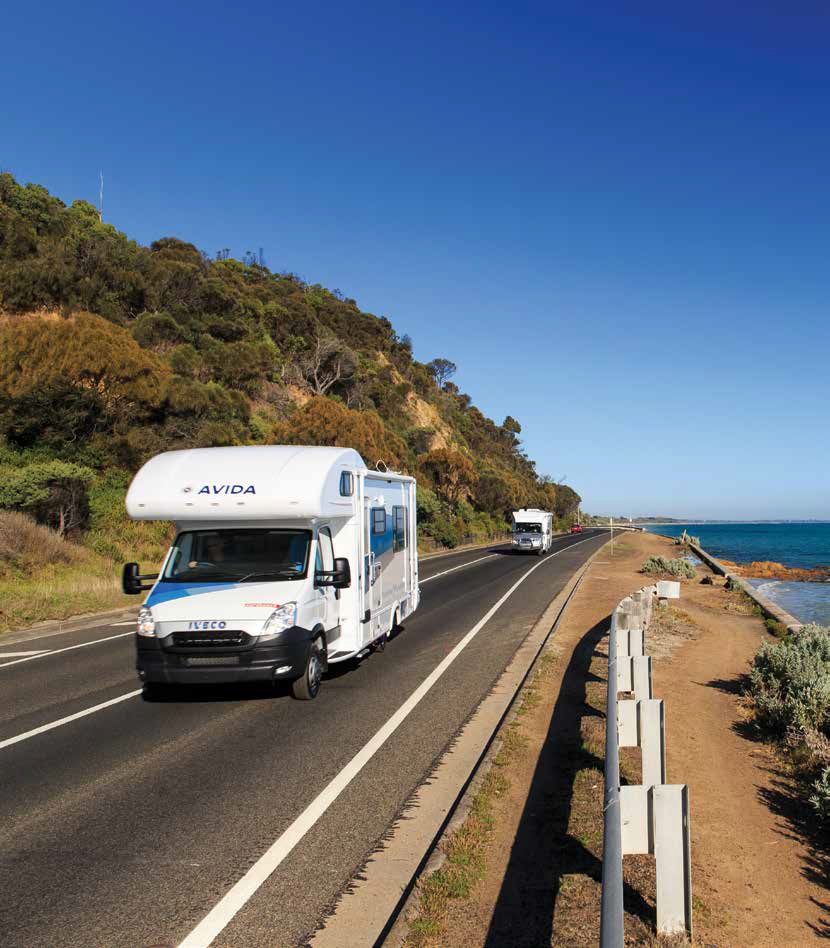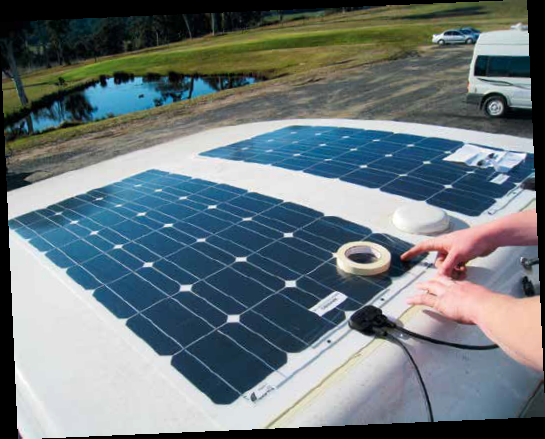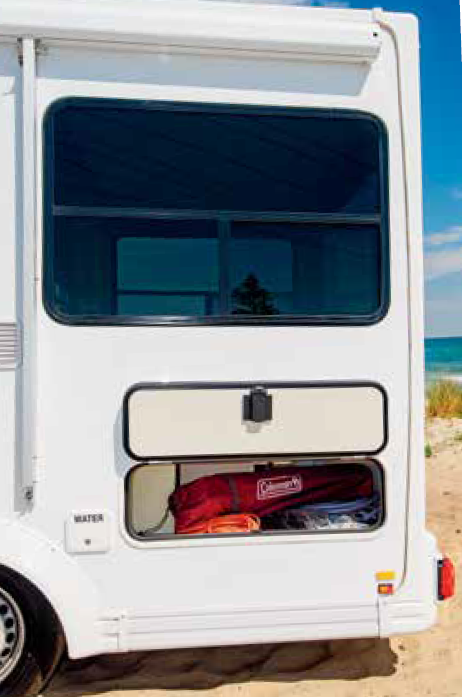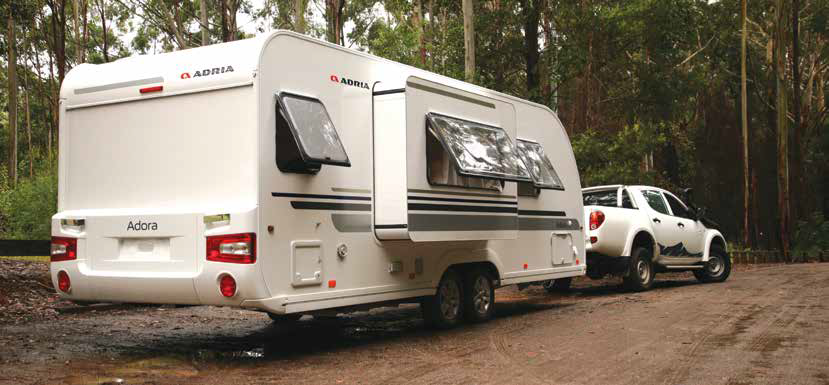
The majority of RV damage we see today, and have seen during more than 20 years of insuring the RV industry, is water damage from leaks, as a result of lack of maintenance.
RVs are frequently exposed to all sorts of weather elements, from a cyclone up north through to a hail storm down south, and all other weather conditions in between, yet unlike a typical bricks and mortar home, they are designed to allow livability and amenities in a very lightweight, compact and functional package.
Like most structures RVs also have an inherent flexibility to them. This means that at the seams where major pieces of the vehicle meet, soft flexible sealants are required, many of which meet up to a flexible lightweight roofing material.
So, when you take all this into consideration, the RVs do a really good job at keeping out the elements, but they will only do so if they are properly maintained and enemy number one for an RV is water. Over time, RVs exposed to water intrusion, will rot and fail in one way or another. This is not to mention the fact that the moisture can also lead to problems like mold and mildew.

One of the best things you can do for your RV is store it in a garage, like this one at Palm Lake Resort lifestyle villages
RESPECT THE ROOF
The roof of your RV is mostly exposed to these elements and therefore, tends to get most of the weathers attention. Unfortunately, any problems that do occur or can occur up there, do go unseen because we simply do not get up there regularly enough, and as they say “out of sight, out of mind”.
Having to repair or replace your RV roof can cost you thousands of dollars very easily. One of the best things you can do, when you are not using your vehicle, or if you are an occasional traveller, is to keep it stored under a carport, in a garage or in storage – away from the elements of the weather.
Alternatively, if you are a permanent traveller, then the best thing you can do is to have your RV roof cleaned on a regular basis.
Roofing and roof sealants should be inspected every six months. Cleaning should be done at about the same frequency, more if the roof is exposed to more contaminants. For the best cleaning method and products, consult either the manufacturer of your RV, the dealer or a certified technician.
Look out for tears or holes in the roof. Beware of small slices that can allow water intrusion and get any holes or slices fixed immediately.
Check the general condition of the membrane. Some roofs that start to show black through the white are at the end of their useful life and may need to be replaced.
Watch for large wrinkles or bubbles. While these can be OK, they should be monitored for change in size. If you’re unsure, contact the manufacturer, your dealer or certified RV technician.

It’s important to check your roof regularly
Check for bumpy areas under the roof. A raised area that is bumpy is an early indication of a leak, and must be fixed immediately. It will require a section of the membrane to be removed in order to allow the decking to dry.
Watch the sealant condition. Sealants are used around everything that goes through the roof, including antennas and vents. Look for peeling, cracking or openings in the sealants, and if found should be cleaned, dried and resealed. Use mineral spirits on a rag to clean the sealants if they remain dirty after washing the roof. If you believe moisture and dirt have gotten under the sealants, they should be removed and replaced.

Don’t leave your generator sitting unused for too long
RUN YOUR GENERATOR
Letting your generator sit unused for too long could cause you to replace it years before you should. Gas has a shelf life of about 30 days. After that time, it can start to break down and damage your generator’s internal components. You have to “keep it flowing” for lack of a better phrase. To do so, it’s recommended that you run your generator two hours a month around 50% load. This will keep it primed and ready.
CHECK YOUR SEALS
A common problem with RVs is moisture leaking into the vehicle, through faulty or deteriorated weather stripping and seals. Seals naturally degrade over time. When seals start to break down, they allow water to seep in, damaging surfaces and promoting mould. Check seals around windows and doors every three months to ensure a snug fit and no deterioration. Keep an eye out for any cracks, loose pieces, water stains, and so on. Even small cracks can allow water to get it. Some RVers will periodically have items removed and resealed just to be sure no water finds its way in.

Check seals around windows and doors frequently as they degrade over time and allow water in
OPEN THE VENTS
Not all RV maintenance tips need to ask for your hard-earned dollars. During times when your RV sits unused, the temperature inside fluctuates and can become extreme depending on your location. Heat particularly causes even the toughest materials to break down and fail over time. Wall coverings, seals, seams, flooring, among other items will slowly deteriorate and cause sooner than needed repair headaches. Keeping your RV vents open promotes air flow through the vehicle and keeps the temperature down. Make sure your exterior vents are covered, however, to avoid rain water making its way inside. Ideally, find a covered area to store your RV when not in use, it will mean wonders for the lifespan of your vehicle.
LUBRICATE YOUR SLIDE-OUT RAILS
The sound of a squeaky pop-out can be like nails on a chalkboard. But that squeak is more than just a nuisance, it’s a sign that your slide-out rails need some tender loving care. Letting your slide-out rails go without proper lubrication can cause deterioration due to rust and corrosion. Experts recommend that you should apply lubricant to your rails once or twice a year, depending on how often you use your RV.

Category: Features
Written: Wed 01 Nov 2017
Printed: November, 2017
Published By: